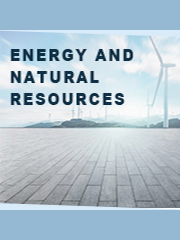WTE (Waste-to-Energy) or energy-from-waste (EfW) is the process of generating energy in the form of electricity and/or heat from the primary treatment of waste. WTE is a form of energy recovery. Most WTE processes produce electricity and/or heat directly through combustion, or produce a combustible fuel commodity, such as methane, methanol, ethanol or synthetic fuels.
This report aims to provide a comprehensive presentation of the global market for Waste to Energy (WTE), with both quantitative and qualitative analysis, to help readers develop business/growth strategies, assess the market competitive situation, analyze their position in the current marketplace, and make informed business decisions regarding Waste to Energy (WTE). This report contains market size and forecasts of Waste to Energy (WTE) in global, including the following market information:
Global Waste to Energy (WTE) Market Revenue, 2018-2023, 2024-2029, ($ millions)
Global top five companies in 2022 (%)
The global Waste to Energy (WTE) market was valued at US$ 11720 million in 2022 and is projected to reach US$ 14200 million by 2029, at a CAGR of 2.8% during the forecast period. The influence of COVID-19 and the Russia-Ukraine War were considered while estimating market sizes.
In China, Waste to Energy (WTE) key players include Sanfeng Covanta, China Everbright, Tianjin Teda, Grandblue, Shanghai Environmental, etc. In the global market, Europe is the largest market, with a share about 55%, followed by Asia, with a share about 30 percent.
We surveyed the Waste to Energy (WTE) companies, and industry experts on this industry, involving the revenue, demand, product type, recent developments and plans, industry trends, drivers, challenges, obstacles, and potential risks.
Total Market by Segment:
Global Waste to Energy (WTE) Market, by Type, 2018-2023, 2024-2029 ($ millions)
Global Waste to Energy (WTE) Market Segment Percentages, by Type, 2022 (%)
- Thermal Technologies
- Biochemical Reactions
Global Waste to Energy (WTE) Market, by Application, 2018-2023, 2024-2029 ($ millions)
Global Waste to Energy (WTE) Market Segment Percentages, by Application, 2022 (%)
- Power Plant
- Heating Plant
- Other
Global Waste to Energy (WTE) Market, By Region and Country, 2018-2023, 2024-2029 ($ Millions)
Global Waste to Energy (WTE) Market Segment Percentages, By Region and Country, 2022 (%)
- North America
- US
- Canada
- Mexico
- Europe
- Germany
- France
- U.K.
- Italy
- Russia
- Nordic Countries
- Benelux
- Rest of Europe
- Asia
- China
- Japan
- South Korea
- Southeast Asia
- India
- Rest of Asia
- South America
- Brazil
- Argentina
- Rest of South America
- Middle East & Africa
- Turkey
- Israel
- Saudi Arabia
- UAE
- Rest of Middle East & Africa
Competitor Analysis
The report also provides analysis of leading market participants including:
- Key companies Waste to Energy (WTE) revenues in global market, 2018-2023 (estimated), ($ millions)
- Key companies Waste to Energy (WTE) revenues share in global market, 2022 (%)
Further, the report presents profiles of competitors in the market, key players include:
- Sanfeng Covanta
- China Everbright
- Tianjin Teda
- Grandblue
- Shanghai Environmental
- Shenzhen Energy
Outline of Major Chapters:
- Chapter 1: Introduces the definition of Waste to Energy (WTE), market overview.
- Chapter 2: Global Waste to Energy (WTE) market size in revenue.
- Chapter 3: Detailed analysis of Waste to Energy (WTE) company competitive landscape, revenue and market share, latest development plan, merger, and acquisition information, etc.
- Chapter 4: Provides the analysis of various market segments by type, covering the market size and development potential of each market segment, to help readers find the blue ocean market in different market segments.
- Chapter 5: Provides the analysis of various market segments by application, covering the market size and development potential of each market segment, to help readers find the blue ocean market in different downstream markets.
- Chapter 6: Sales of Waste to Energy (WTE) in regional level and country level. It provides a quantitative analysis of the market size and development potential of each region and its main countries and introduces the market development, future development prospects, market space of each country in the world.
- Chapter 7: Provides profiles of key players, introducing the basic situation of the main companies in the market in detail, including product sales, revenue, price, gross margin, product introduction, recent development, etc.
- Chapter 8: The main points and conclusions of the report.
